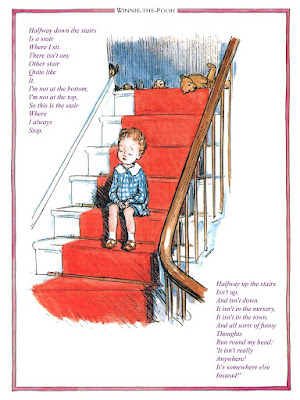First do I write about: #iteachmath or Twitter Math Camp 17? ... have to get the hashtag stuff off my chest.
I love that Dan is thinking about inclusivity, and it befits his problem solving orientation that he's willing to rethink any aspect of the situation.
I started blogging April 2009 with a 50 word post, just sharing a resource I liked. I thought I would use the blog to share the stuff I found around the web that I like or was thinking about how to use in my class. Ten posts later I finally shared an first activity that I did back then. A math game, of course.
This was a long time ago in internet years, and I understand that the world is different. I was inspired by what I was finding, and just wanted to join in.
First tweet, 2010. (Find yours.)
I was at Maria Anderson's tech camp (@busynessgirl) and she suggested Twitter as a way to connect with student teachers. That's been great, but I wound up liking the math twitter/community plenty for myself.
When it was time, 2013, the community wondered how to refer to itself. They came up with Math-Twitter-Blog-o-Sphere, and I liked the silliness of it right off.
Is #MTBoS a barrier now? People are hurt by this suggestion, because they work like hell to make the community inviting and inclusive. And are always looking for more ways to do that better.
From where do the hard feelings come, then? I have theories. Basically this list is the consequence of people new to twitter don't know how it works yet.
- some of the most followed people are friends. They take math with anyone, but also talk real life to each other. There's shared experiences, so they refer to things that not everyone was a part of. But because of the way Twitter is, we see some of those relationships. That could make you feel like (Justin Aion analogy) being at a party by yourself. As Justin says, at a party, they'd see you standing alone and approach you, but on Twitter, you can be invisible if you want.
Remedy: new users can let people know they are there. - People say 'Include #MTBoS and get your questions answered.' Sometimes? More people watch that tag and respond to new people than I think would ever happen in most communities, but not everyone gets responded to.
Remedy: tweet @someone. If I see someone asking for a resource, I may not have a response, or know others who have better. But if you tweet @mathhombre, I reply. (I think?) I challenge you to find a community with a higher response rate. - #MTBoS is a community. We have relationships, shared values, and even meet when we can. If there's an in, there's an out.
Remedy: come on in!
What I notice about these problems is that the remedies are all putting the burden on the people who feel outside, which is usually the hallmark of an exclusion problem. But that's where we need to see and popularize the efforts of Tina Cardone, Sam Shah, Lisa Henry et al. There wasn't an intention to brand anything, but having a name is part of making you a group, a tribe or a family. I would rather reassure people that this family wants you and is inviting you in, than worry about what the name connotes.
It did feel autocratic, and like a dictate, but that's probably mostly because of his position in the community. He is the introduction to the MTBoS for most math teachers. He is going to hear the complaints the most, maybe?
The timing was really unfortunate, as it distracted from the amazing keynote by Grace Chen. (Pts 1 and 2) (Which I will talk more about in the next post.)
 |
| Andertoons |
Dan is trying to connect people with #iteachmath. Great! I don't see how that solves any of the three bullet points above. Hopefully, the new tag will be successful. If it is, within a couple years people will feel like it's cliquish or there are rockstars and arguing for #mathlearnersunite. Great!
I don't think of this as particularly important - or coherent - post, but this is a blog. I can work out my thinking here, and live long enough to be embarrassed of it. I can give a first take. No one else may read it or maybe it becomes the rare post that gets a comment. One of my Twitter Math Camp take aways, from Carl Oliver's sweet keynote (Pts 1, 2 and 3), is that it's important to push send.
If you hear about the #MTBoS, my guess is that you will be curious enough to investigate. If you do investigate, you'll find things that will help your learners. If you value that, I encourage you to join in. The more you participate, the more you'll feel a part. If you can get to a Twitter Math Camp, you'll be stunned at the welcome. But nobody's going to make you.












